|
   |
|
Page 5 |
Newsletter 149 Summer 2025 © Hampshire Mills Group |
|
The only way is Essex!
Ruth and Keith Andrews
|
|
We chose Essex for our early Spring break this year,
as we hadn’t really visited Essex for over 20
years. Essex is renowned for its windmills, and its
large number of white weather-boarded watermills
(most of which have been converted to private
residences) – plus several silk mills. We were
blessed with 5 days of sunny Spring weather.
Although most of the windmills, and a few of the
watermills have open days, as it was out of season
we didn’t find any that were open which was as we
expected. Essex, of course, also has lots of pretty
villages, but this is a newsletter about mills!
|
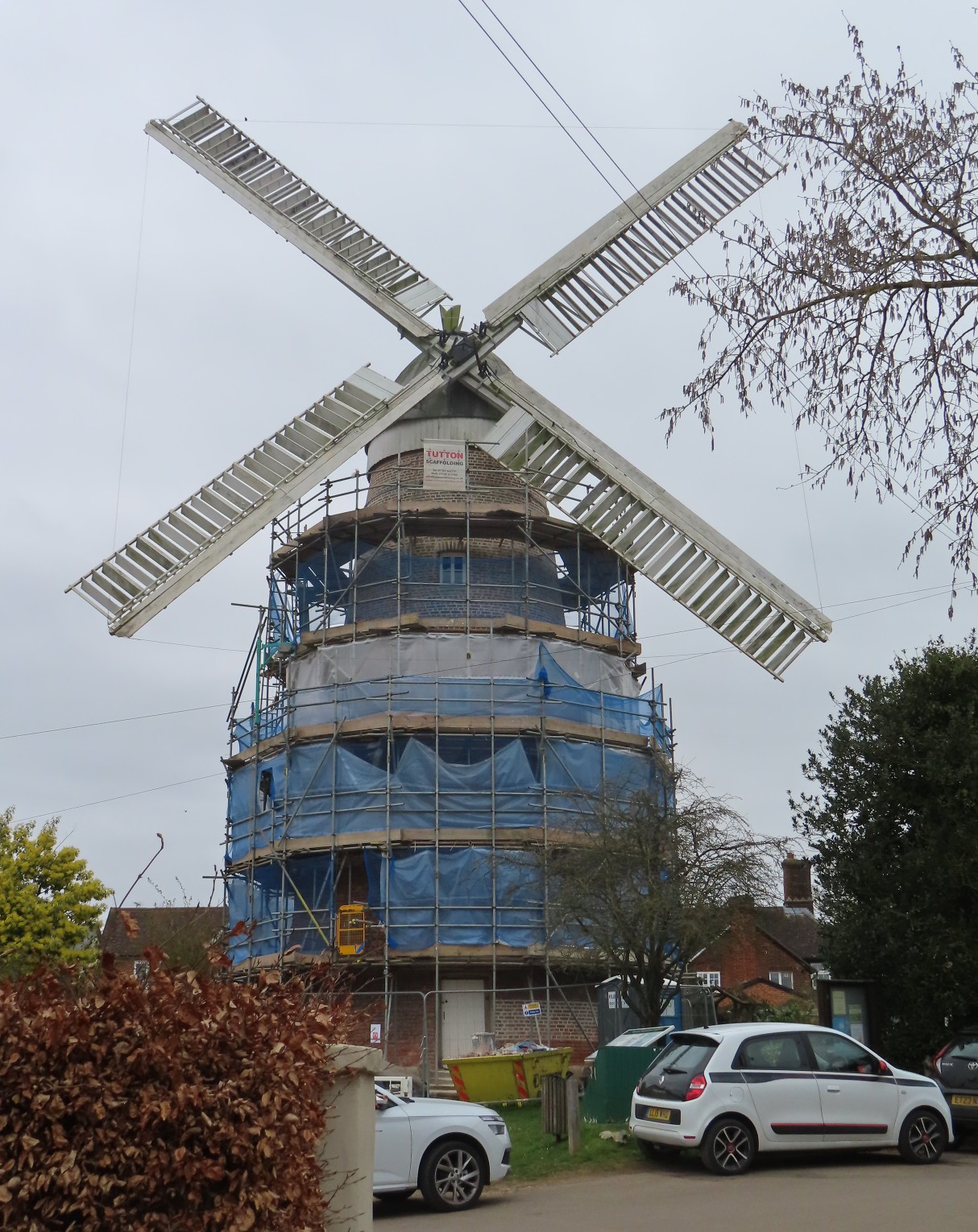
Stansted Mountfitchet:
Under the wrapping is a 5-storey brick tower dating
from 1787 which worked until 1910. We were pleased
to see that renovation work is in progress.
|
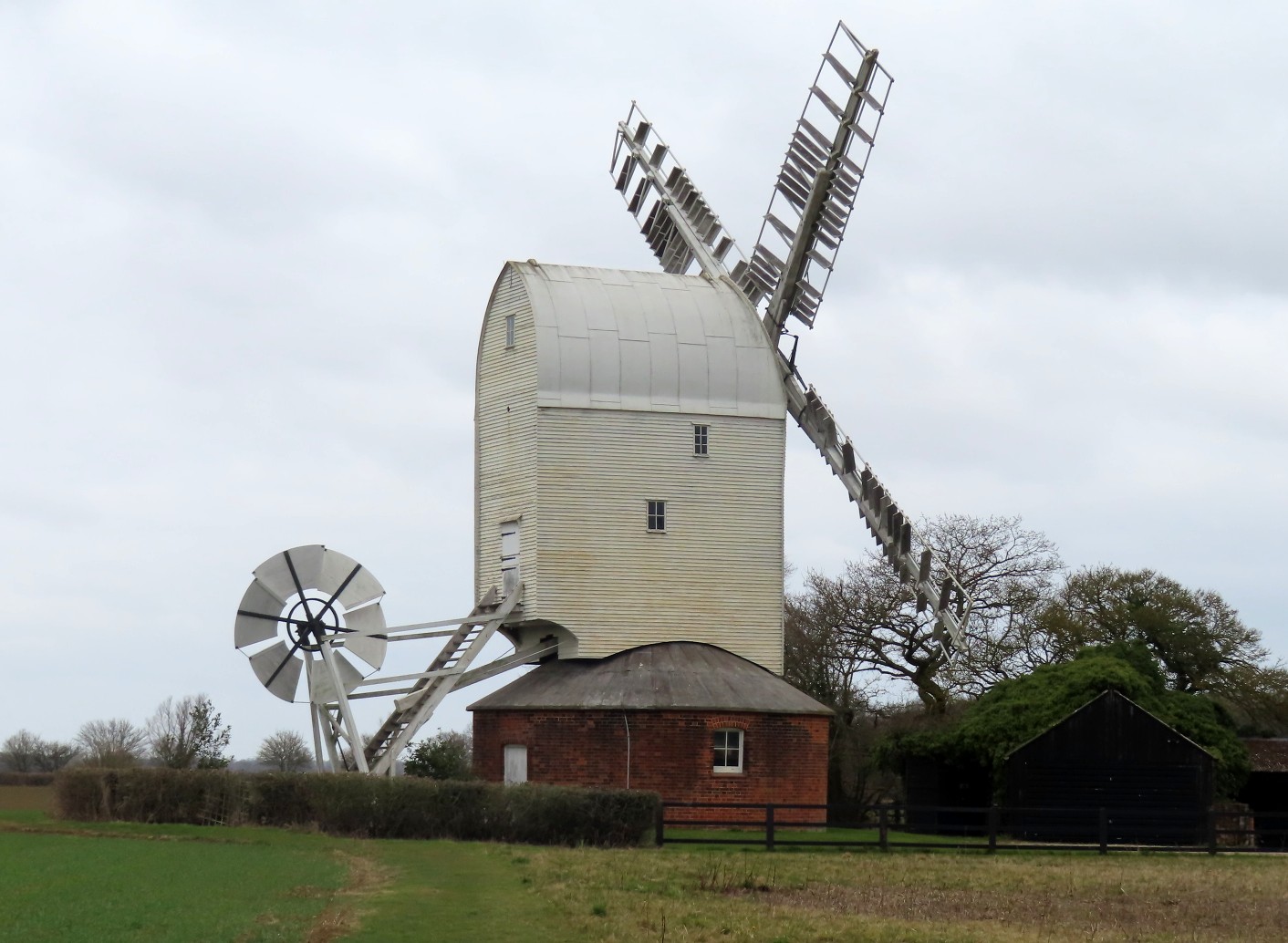
Aythorpe Roding:
The largest remaining post mill in Essex, built in
the 1770s, continuing in use until 1936. The
double-sided patent sails look a little unloved, but
we think it is a long time since it was first
restored. |
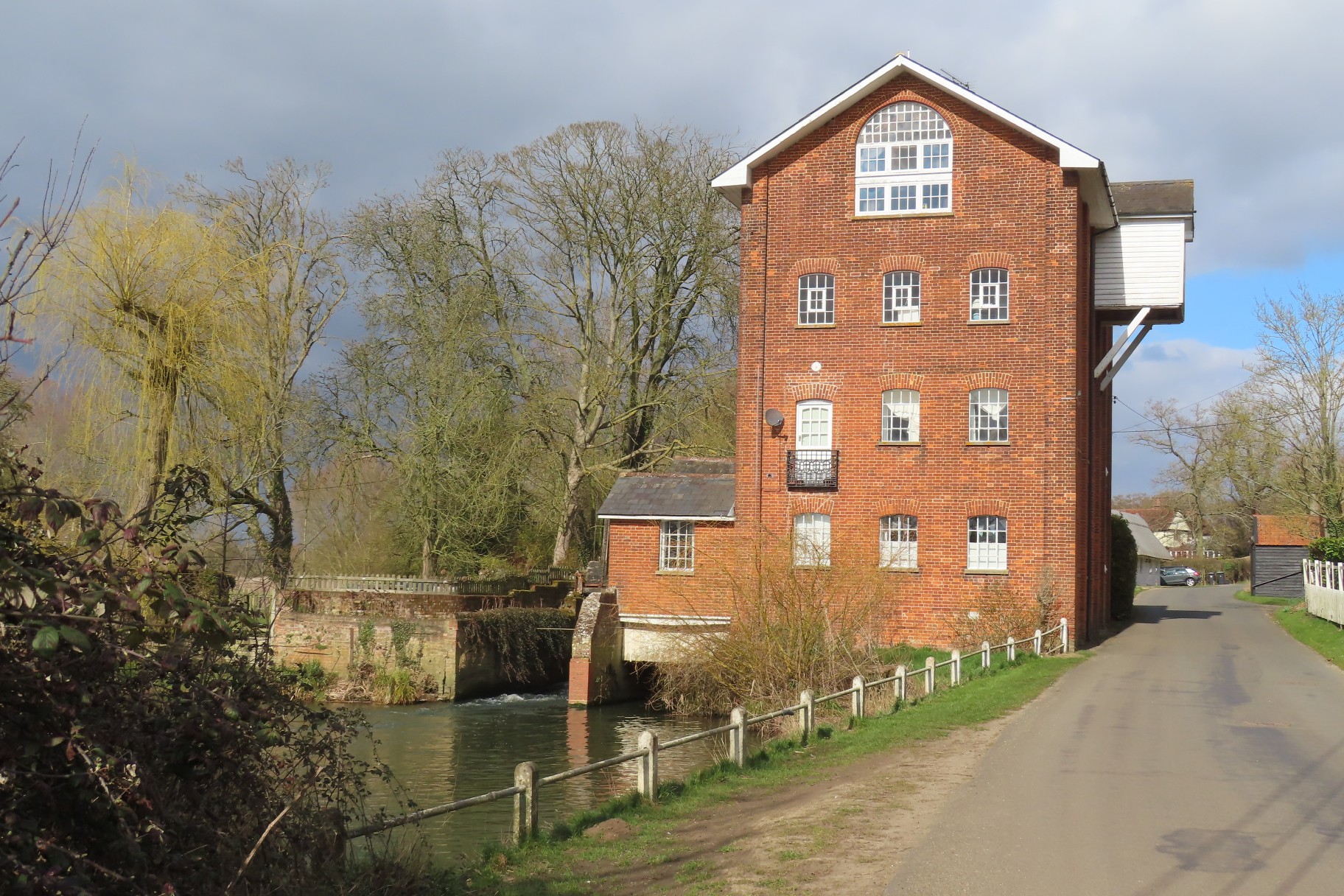
Felsted:
Our first watermill was not white weather-boarded!
It replaced an earlier mill in 1858. At the left
notice the separate wheelhouse, whose 20ft x 10ft
wheel drove 5 pairs of stones. |

Stebbing Town Mill:
This dates from the 18th century, but was renovated
in 1877 by the same family that owned Felsted.
After milling ceased in 1901 it was used for animal
feed, finally closing in 1995.
|
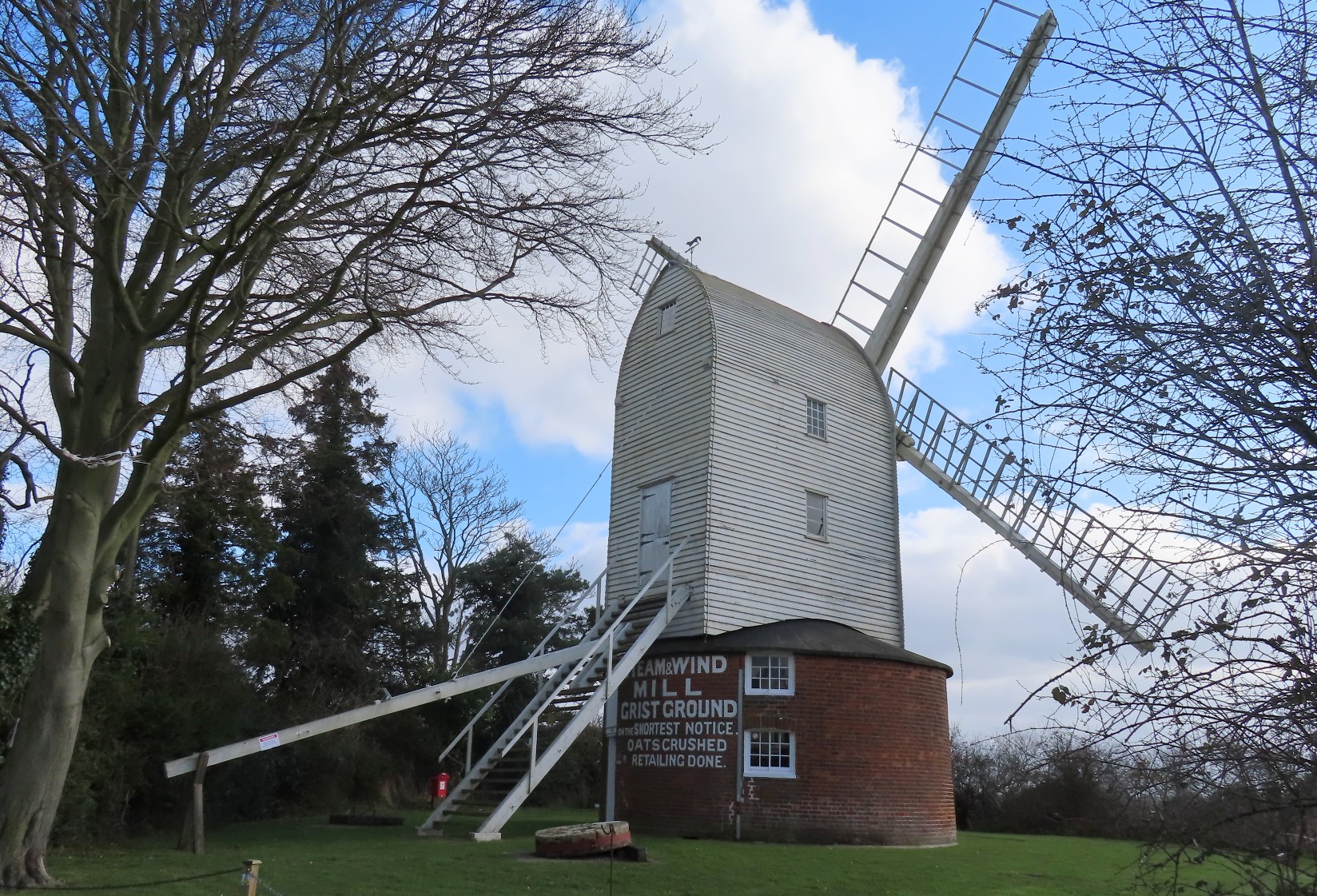 |
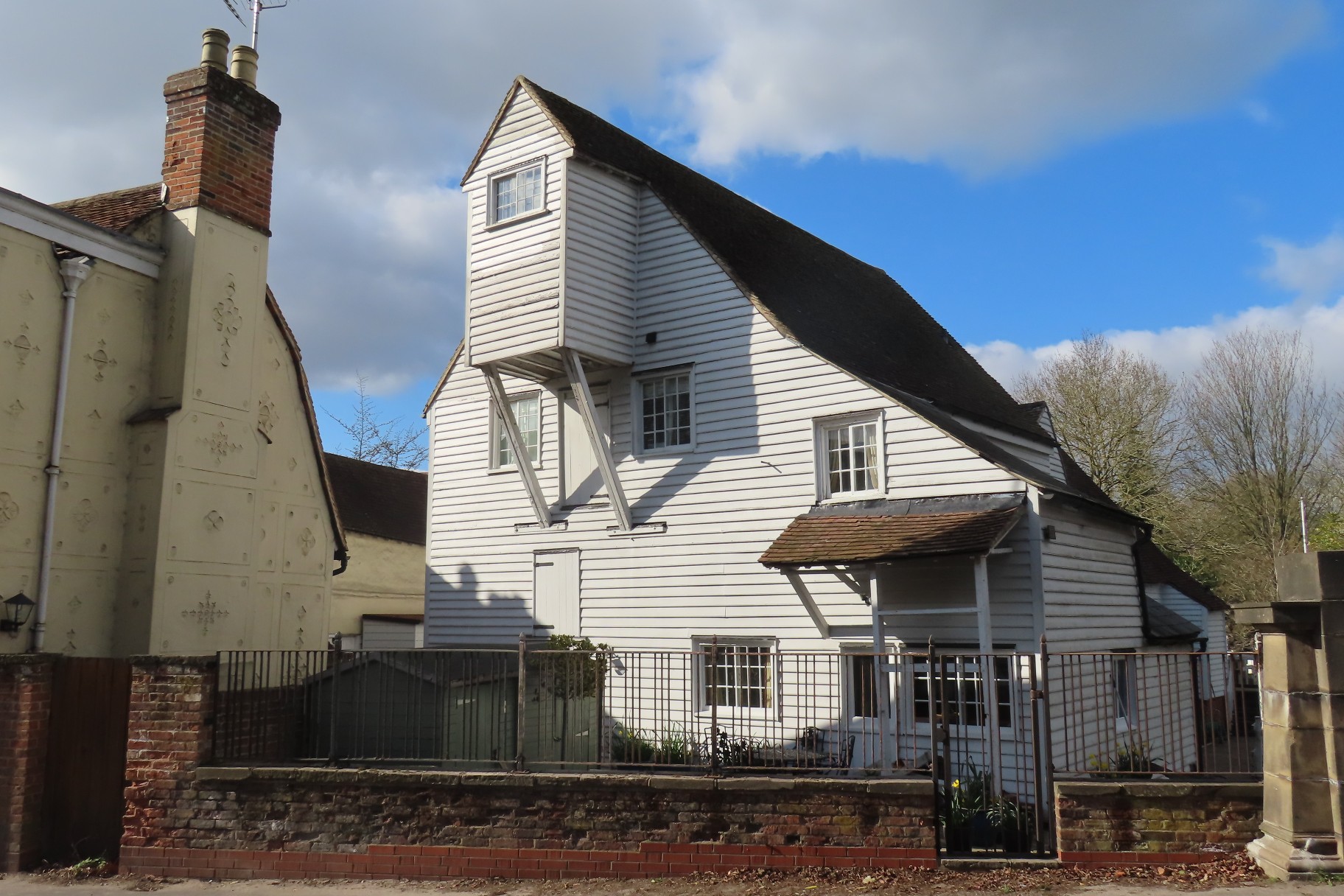 |
|
Bocking:
This is the second oldest post mill in Essex built
in 1721,
and moved to its present site in 1830.
Bradford Street watermill
was probably built in 1655 as a fulling mill. By
1832 it had been converted to corn milling, with
three floors, 4 pairs of stones, and a 6ft fall of
water. In 1836 it had 7 pairs of stones worked by
water and steam.
We trespassed into Suffolk for the next few sites,
and our information is more limited.
|
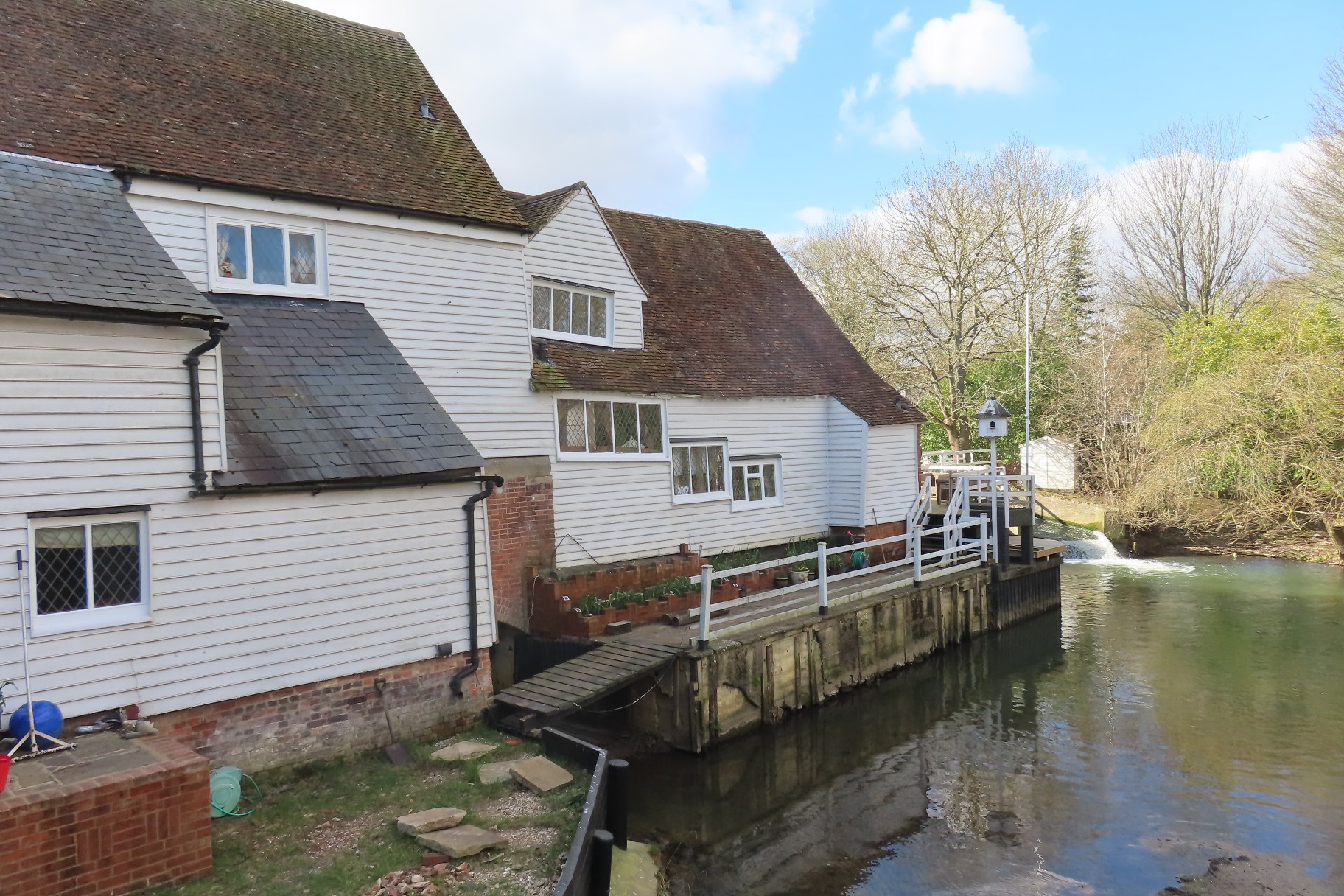 |
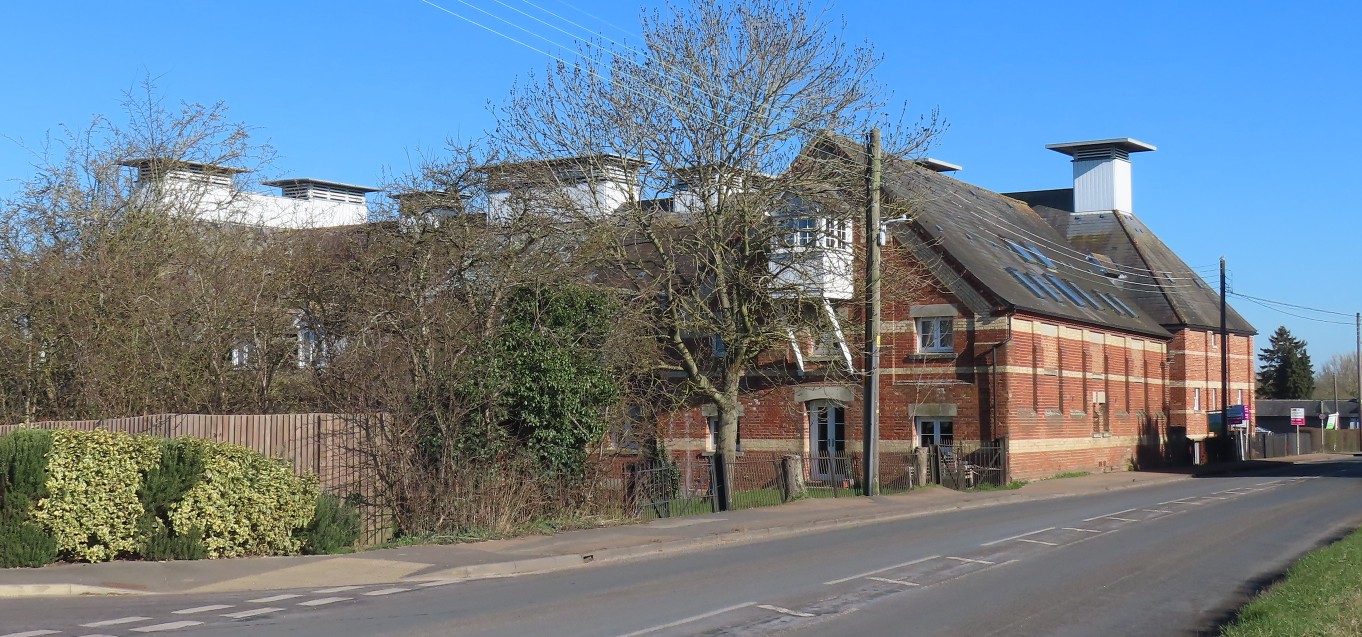
Long Melford:
As well as the prominent and very converted brewery
or maltings, in the centre of the village, the ‘Old
Maltings’ is now an antiques and lifestyle centre |
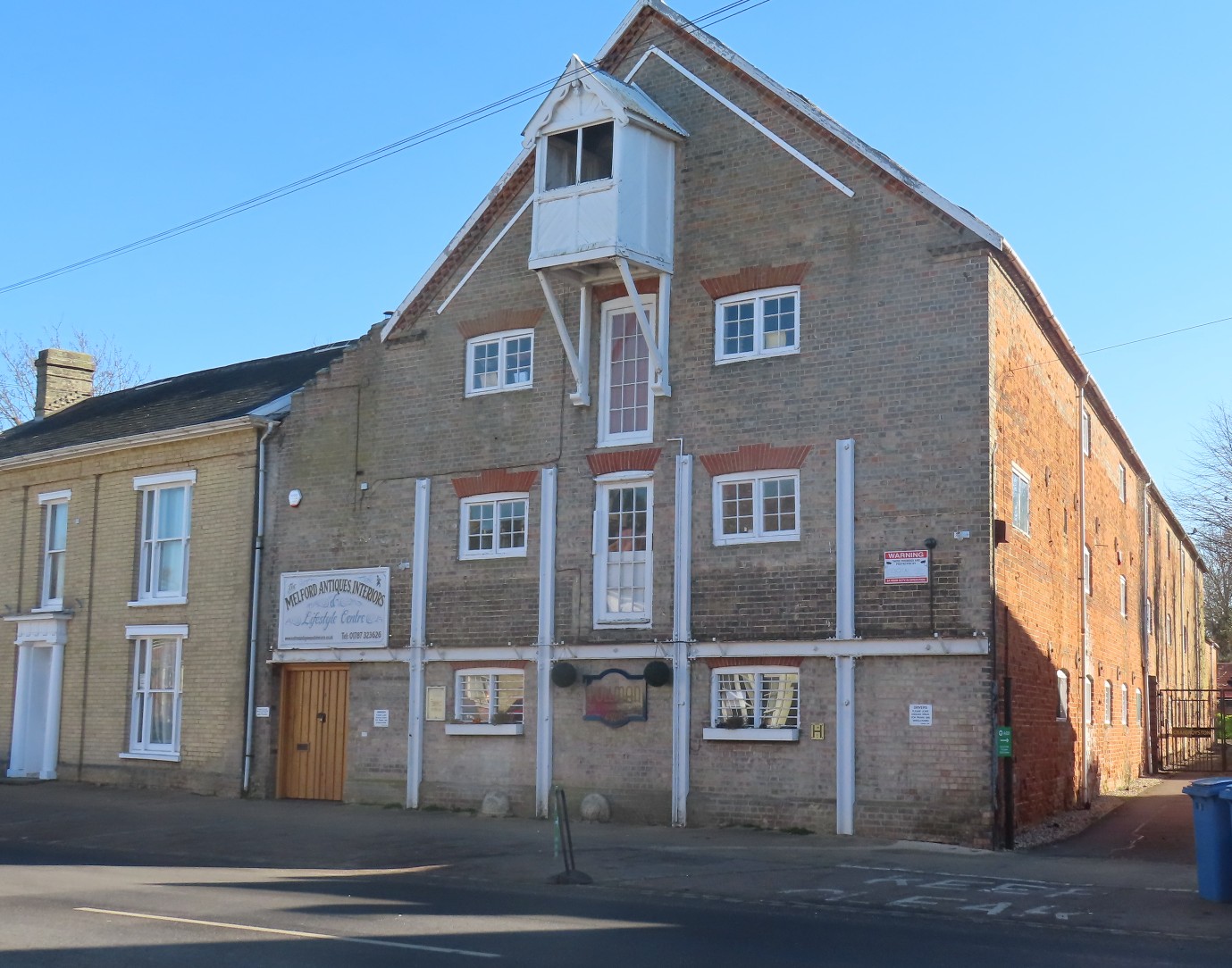 |
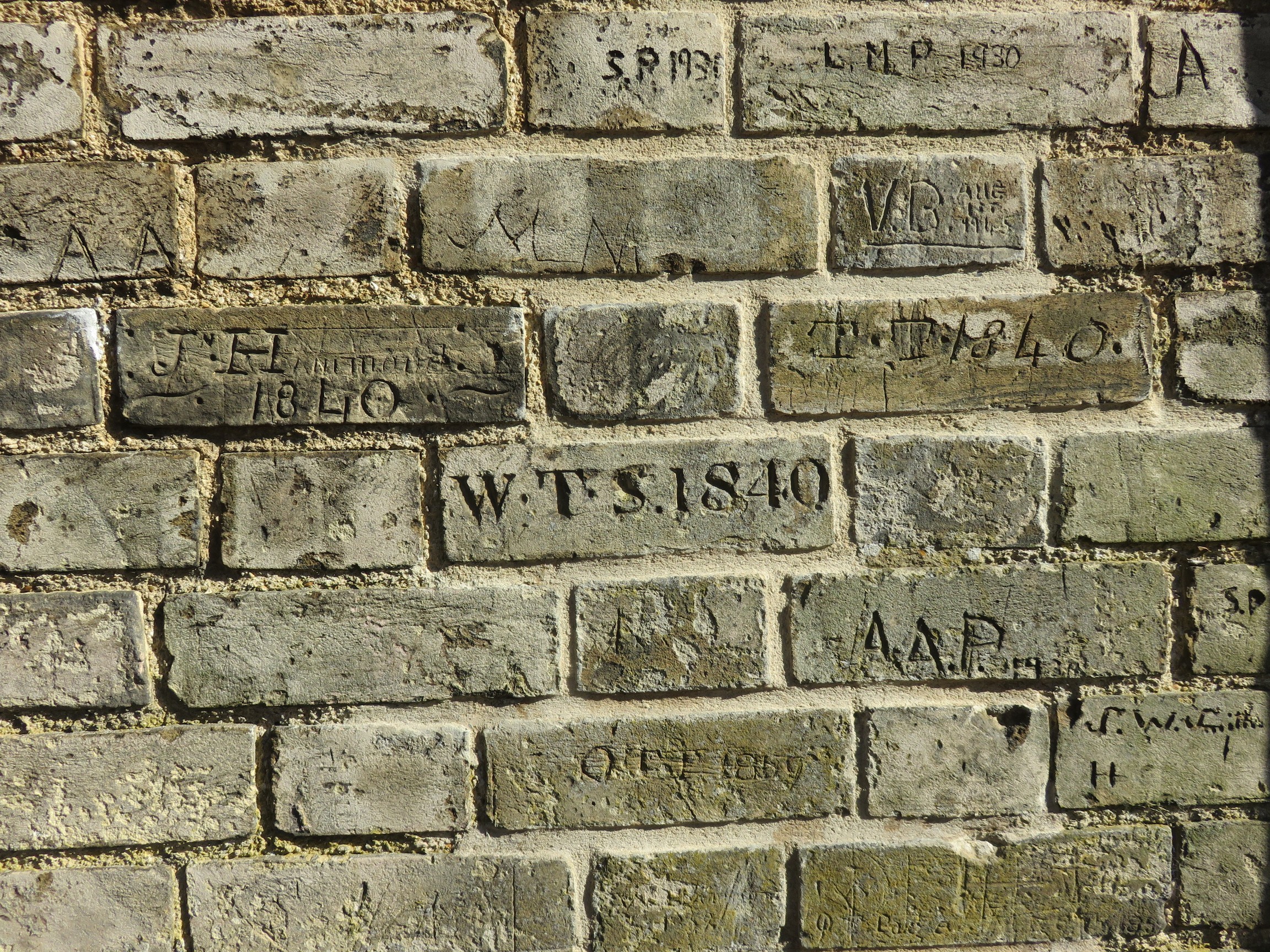 |

Cavendish:
We have no information about this building, but
the distinctive buff-coloured bricks must have been
easy to carve.
|
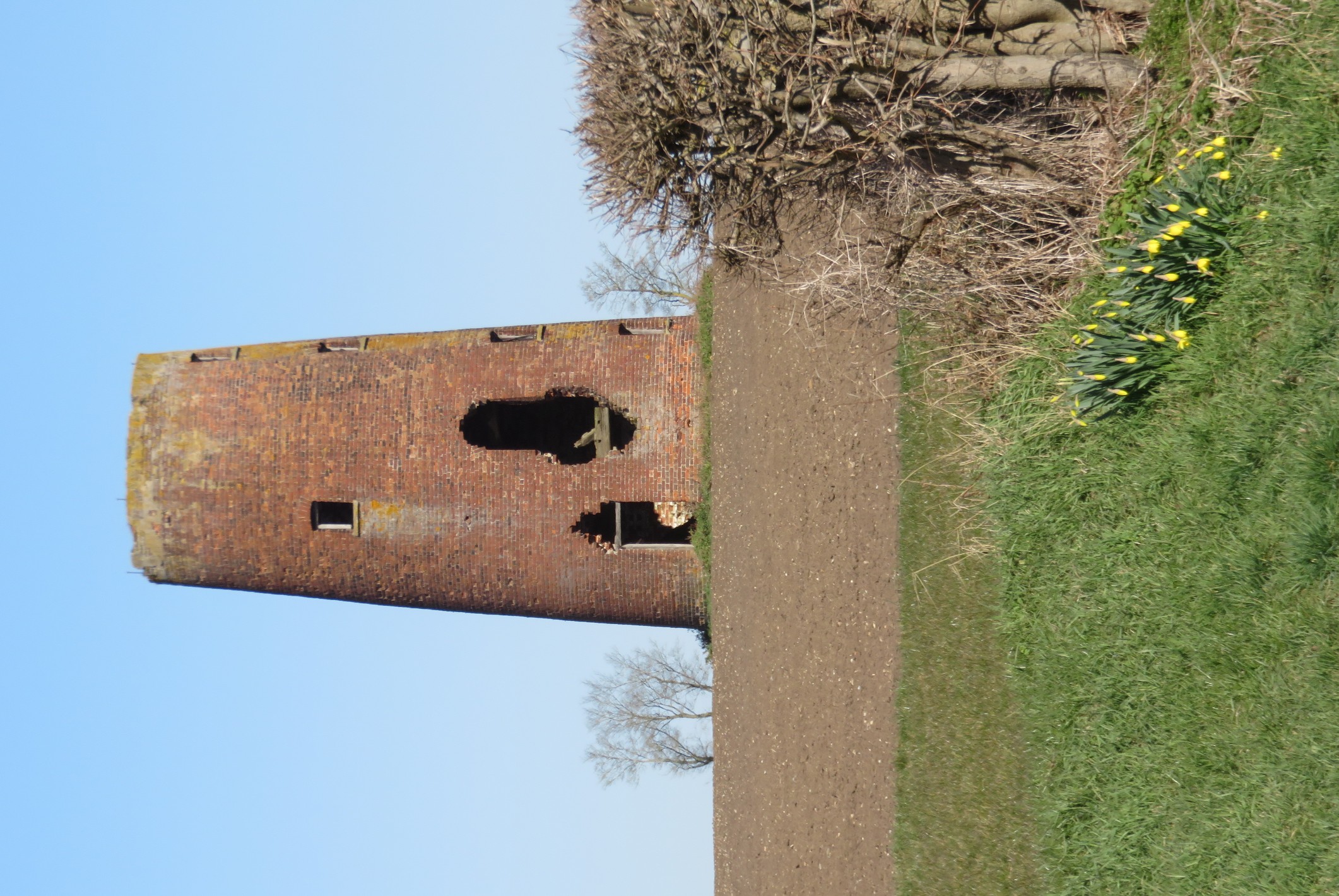
Chilton Street:
This is what you find when you see a windmill marked
on the OS map and go to investigate. |

Now we return to Essex.
Pentlow:
During the 19th century this mill incorporated a
dairy and a brewery, before diversifying into
milling and a coal merchant. By 1870 it relied in
animal feed with a sideline in poultry and eels.
The waterwheel was severely damaged in a flood
around 1910, and replaced by a portable steam
engine, and later by a paraffin engine.
|
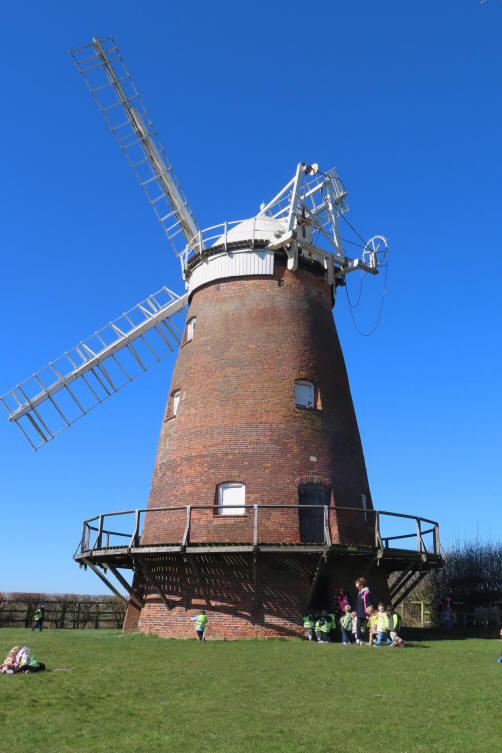 |
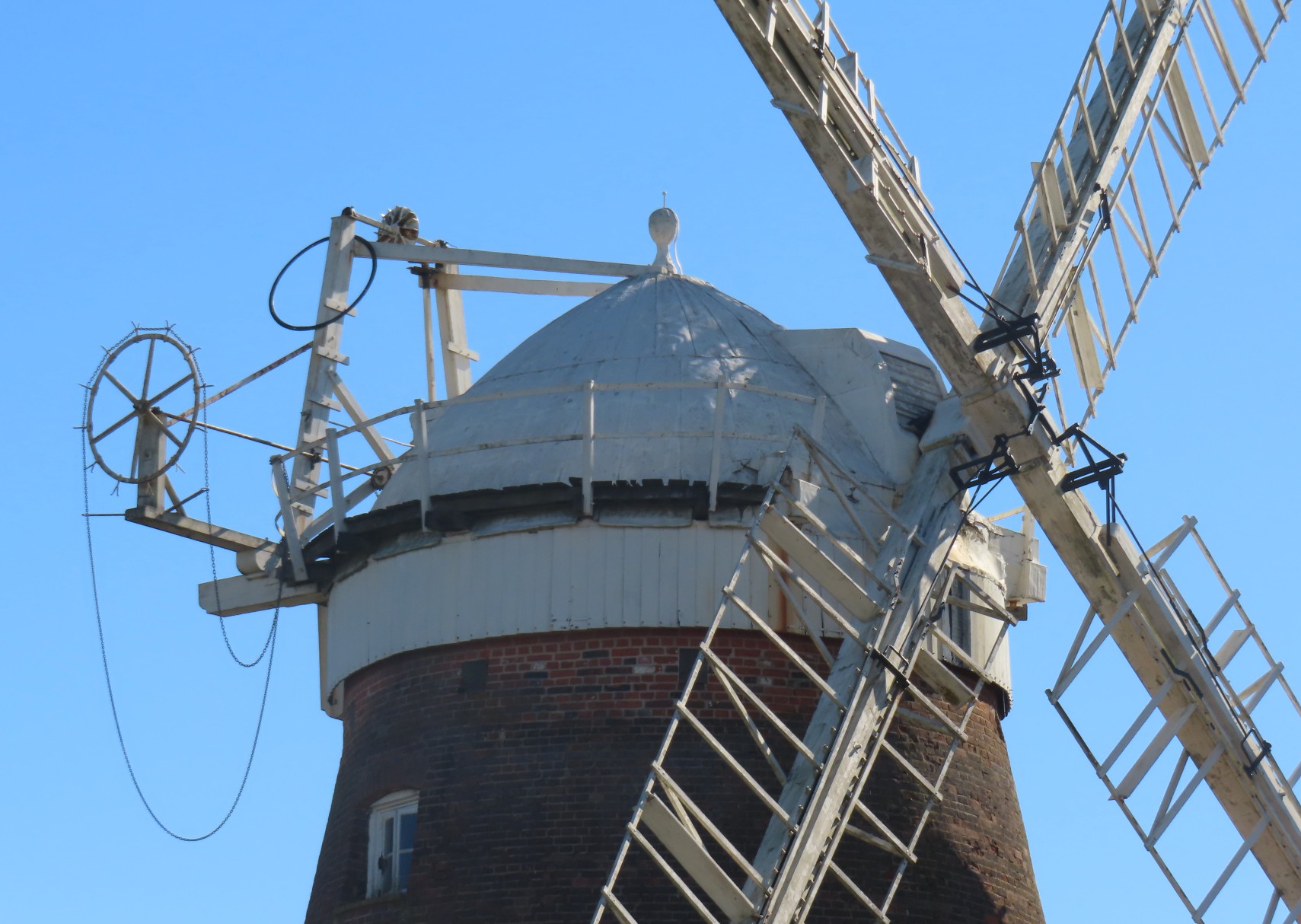
Thaxted:
This brick tower mill was built in 1804 for John
Webb using bricks from his own brickworks. It was
disused by 1904 and decaying by 1970, but has now
been completely restored to working order. We were
delighted to hear and then see a group of excited
children enjoying the sunshine. |
|
Sible Hedingham:
Alderford Watermill is one of the few that is open
to the public at times. It dates from the 18th
century; two pairs of stones were driven by a 14ft
undershot wheel with wooden paddles. It was
extended in the 19th century when it was adapted for
steam milling with two more pairs of stones. In the
1930s the steam engine was replaced by a Ruston &
Hornsby oil engine. The mill was restored by the
Essex County Council mill team. |
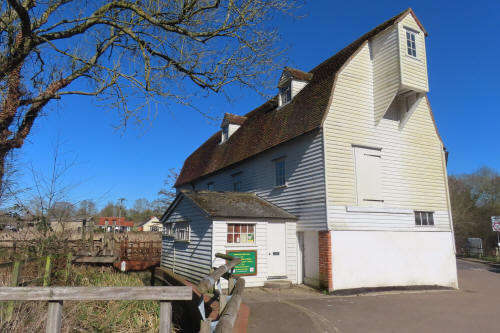 |
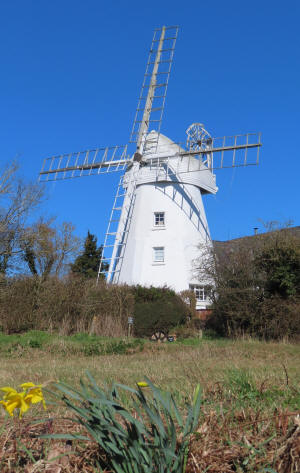 |
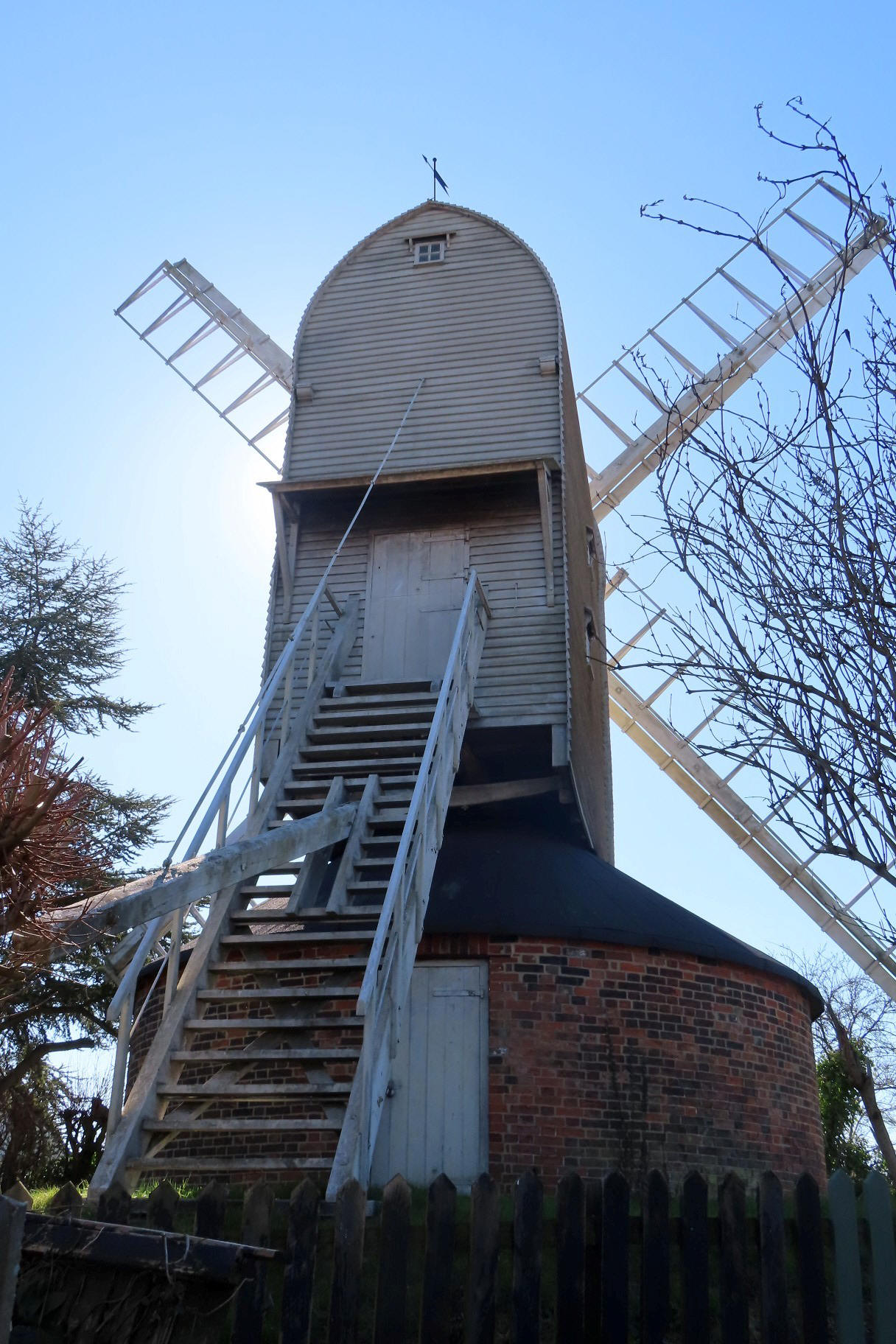 |
Great Bardfield (left):
Gibraltar Tower Mill, now
residential.
Finchingfield (right):
Duck End post mill, mid-18th century, its
roundhouse was added in 1840. Disused by the 1890s,
it is now restored and a much photographed feature
of the picturesque village green.
|
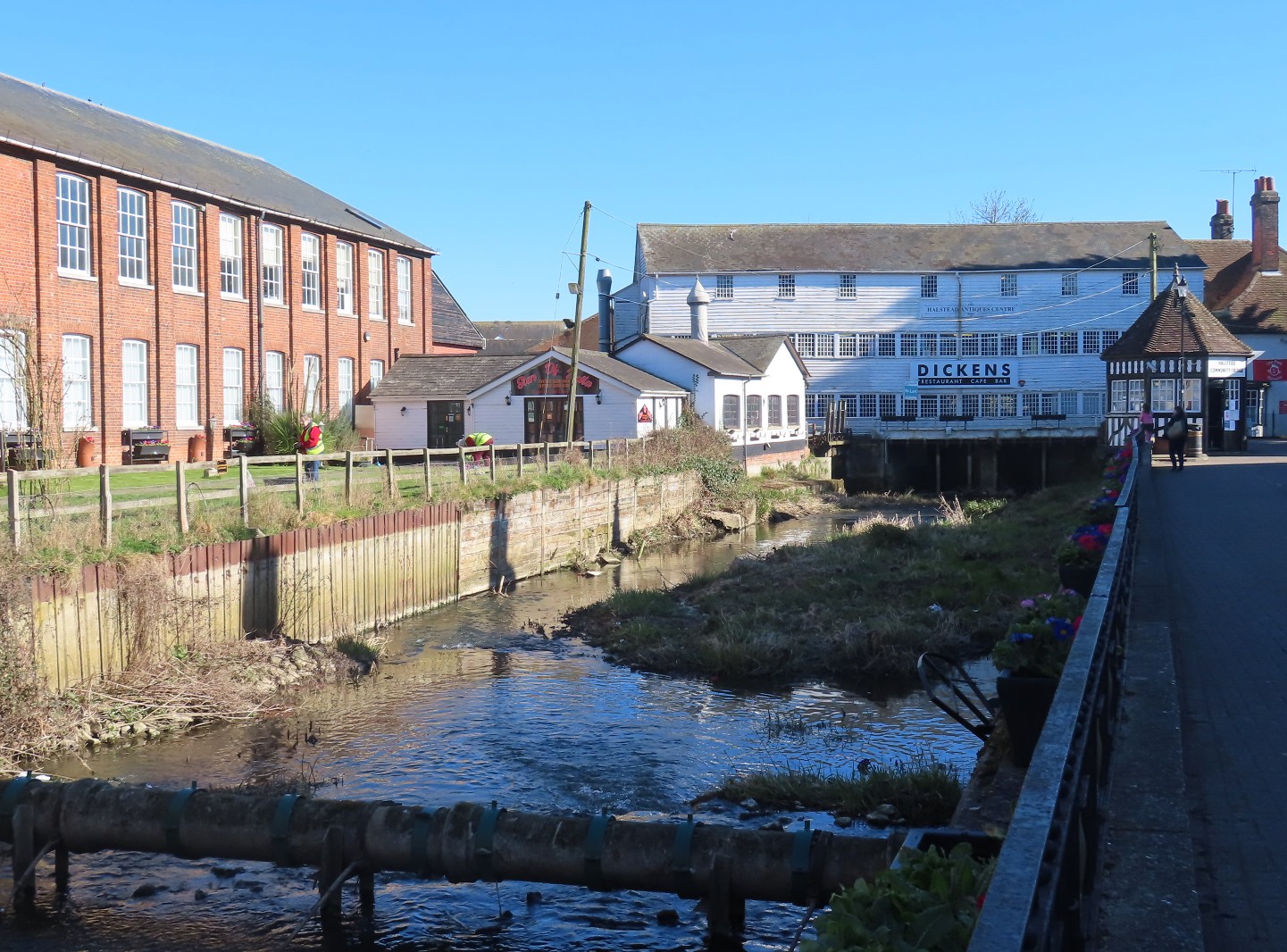 |
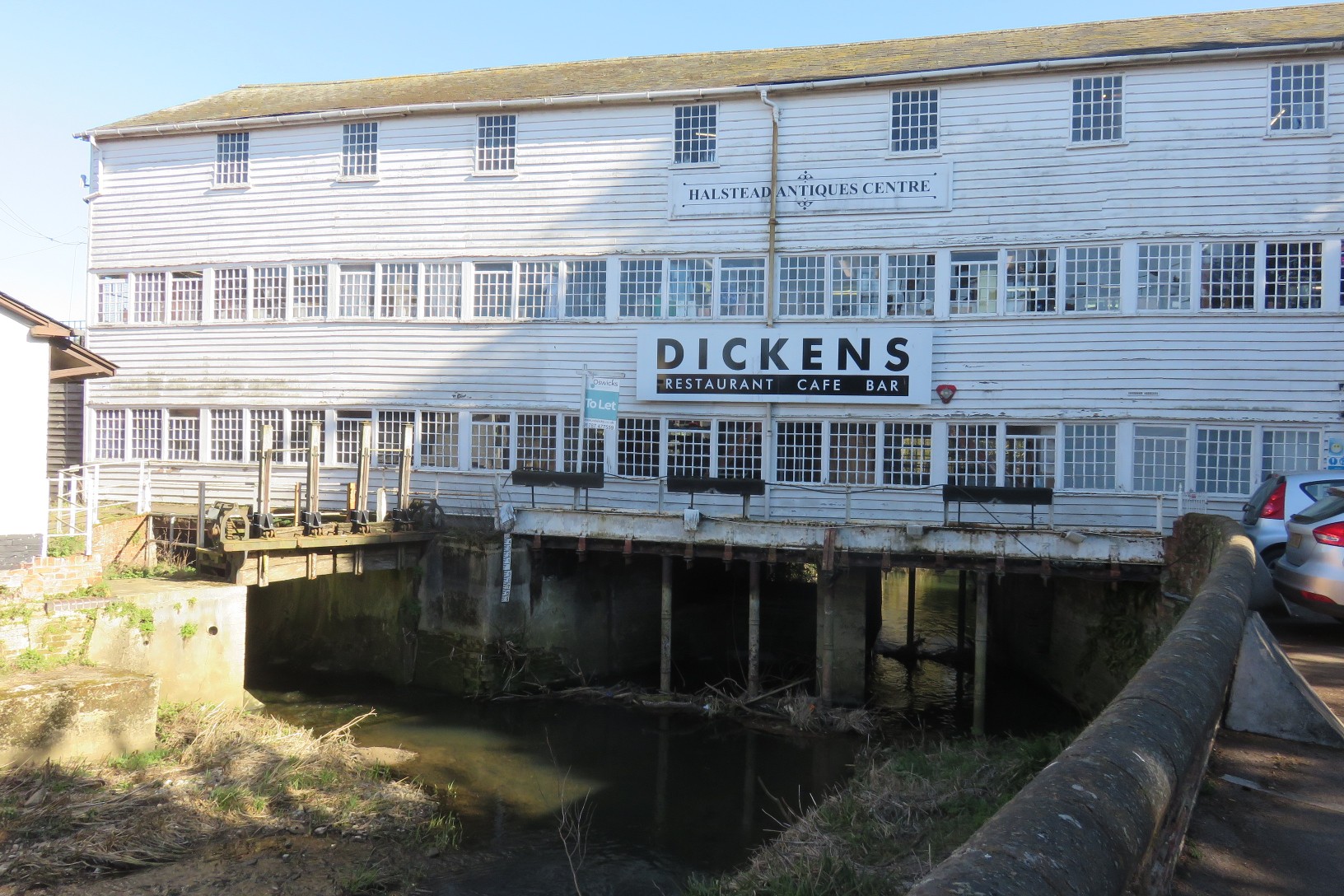 |
|
Halstead:
A corn mill on the River Colne was converted to a
silk-throwing and -weaving mill in 1825. It was
bought by Courtaulds in 1828. The ground floor was
used for drawing the silk, the first floor for
winding, and the top floor for weaving. In 1832 a
power loom factory was built (seen on the left),
a second in 1836, and a third in 1842. The original
mill astride the river is now an antiques centre,
very much like Chesapeake Mill.
|
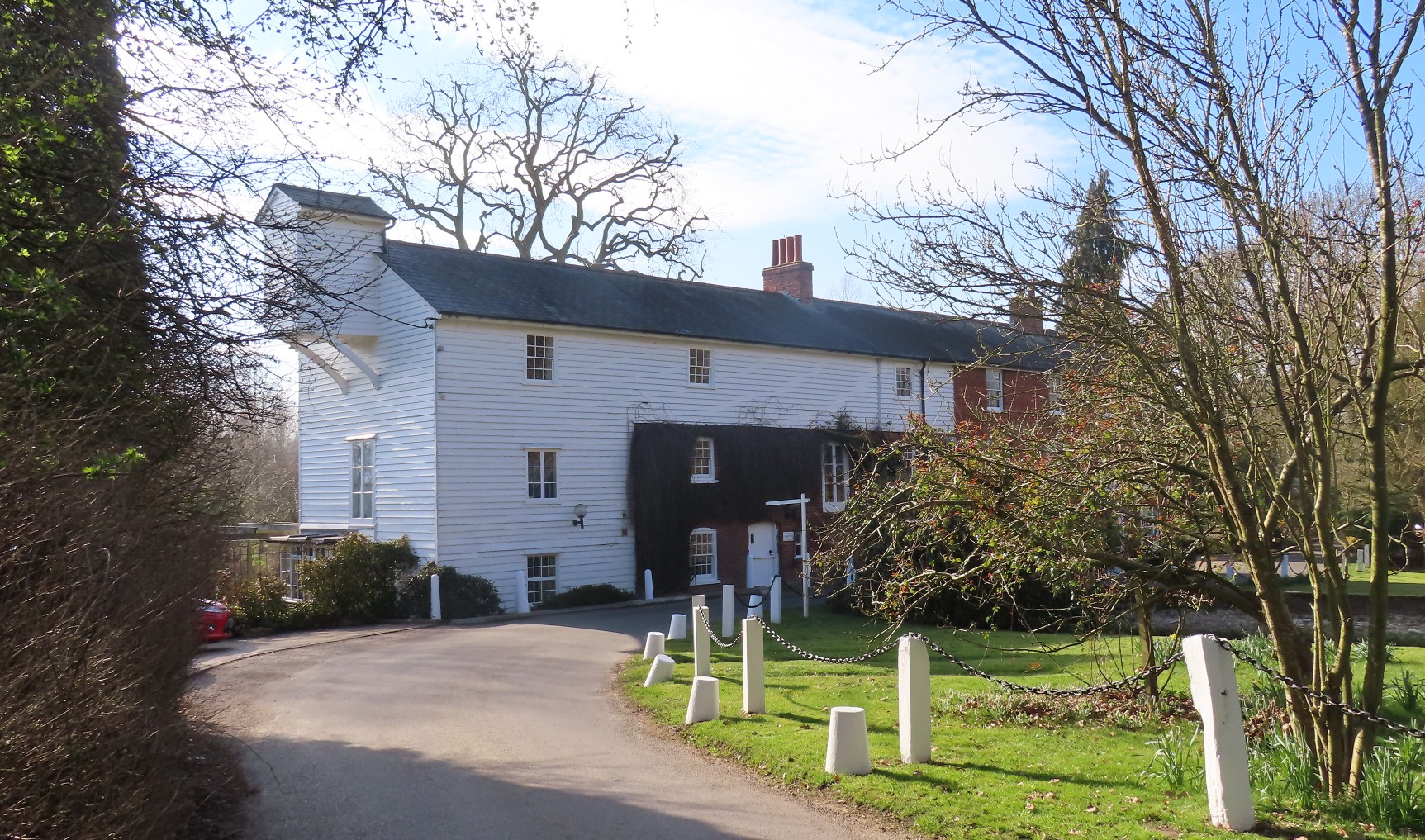 |
Little Braxted:
Dating from the 18th century, this weather-boarded
mill has a projecting luccam, and a red brick mill
house. It seems that the original very small 8ft
waterwheel was one of a pair. It closed in 1886,
when the mill was divided into two separate
residences. |
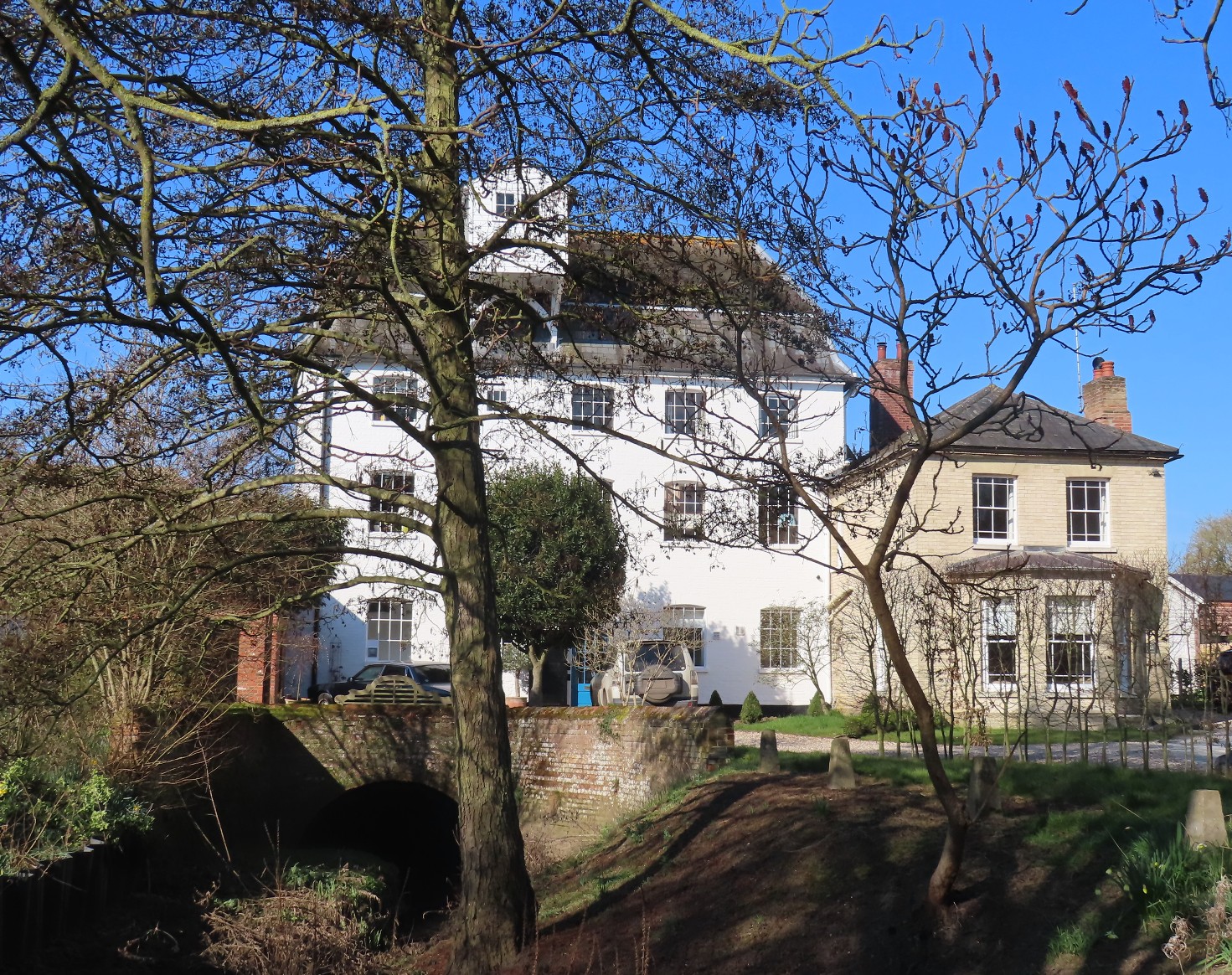
Wakes Colne:
A corn and oil mill, operated by water until 1945
when electric power was introduced; it was also a
coal merchant’s depot. It is part of a large group
of buildings with a former granary and is now all
residential. |
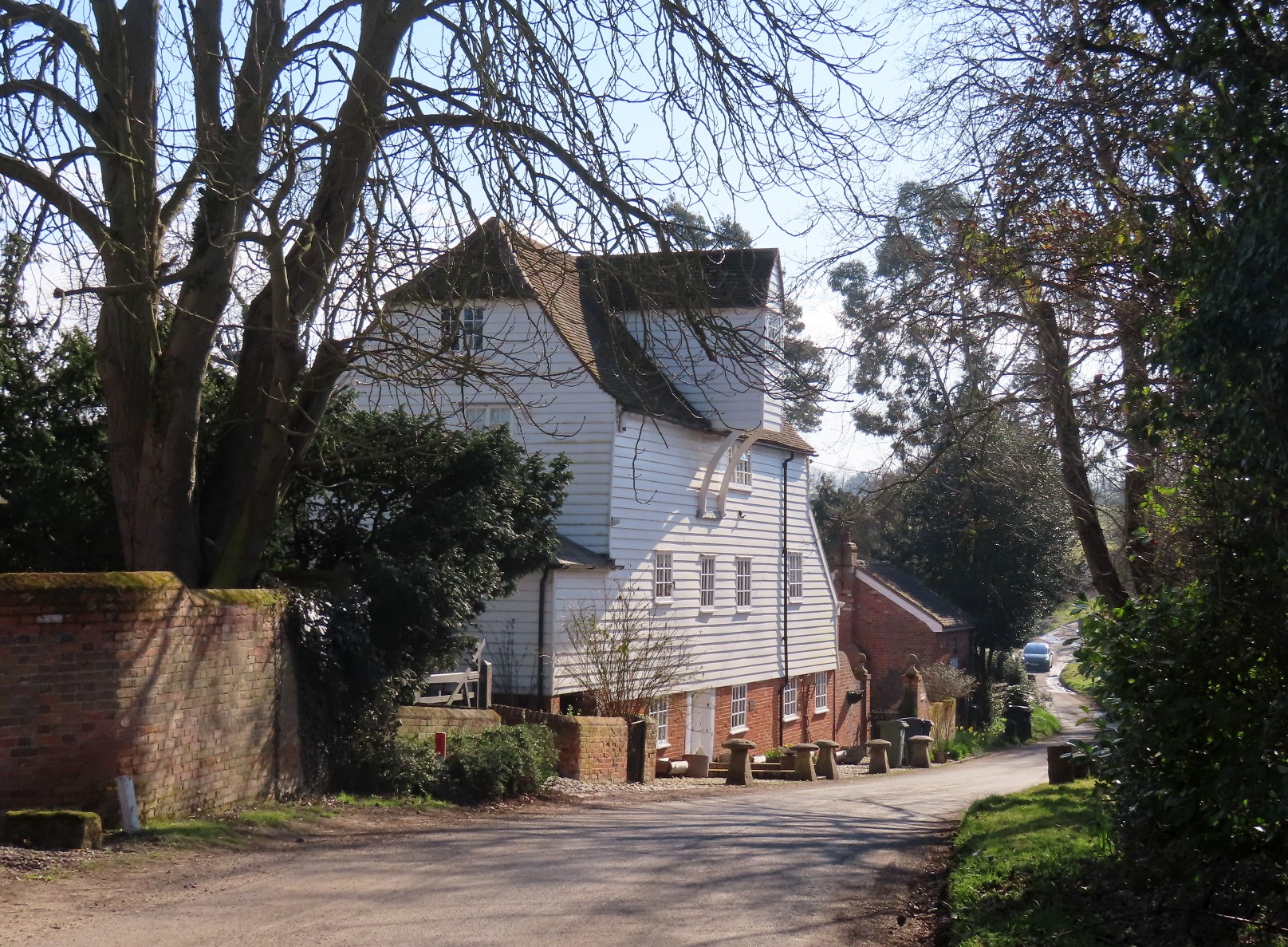
Colne Engaine:
Called Overshot Mill, it was built as a fulling mill
in 1643, and converted to a corm mill between 1787
and 1810. The iron waterwheel was replaced by a
second-hand Gilkes turbine between the wars. This
apparently quiet country lane had very heavy traffic
(probably because of road closure diversions) so
photography was rather tricky.
|
|
Wickham Bishops:
We couldn’t see the mill here because of all the
high hedges and walls, but of much more interest is
the timber trestle railway bridge carrying the
Maldon, Witham, and Braintree Railway over the
Blackwater River and the mill leat. They are the
last surviving such bridges in England.
|
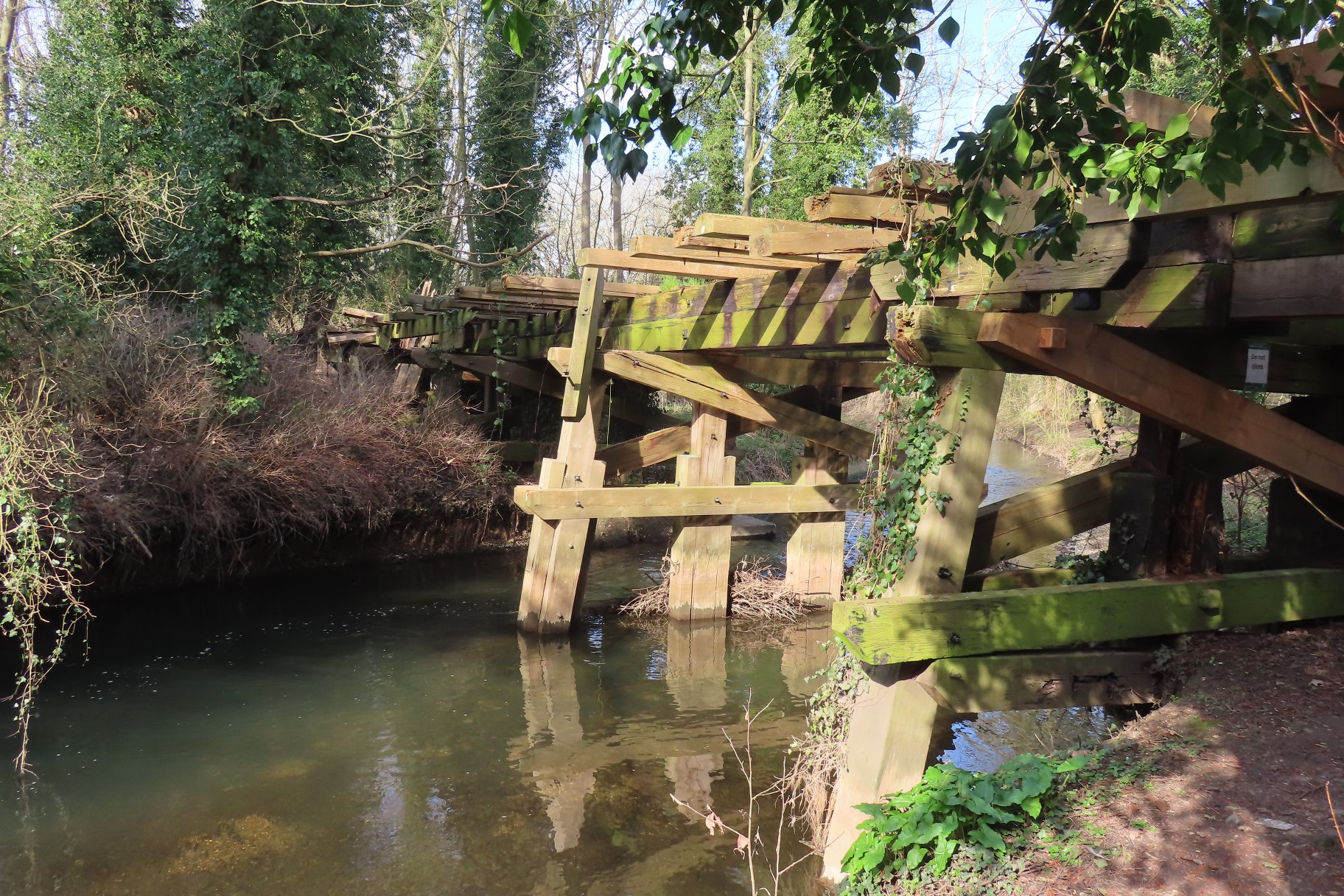 |

Kelvedon:
Greys Mill or Docwra Mill was rebuilt in 1858 after
burning down. The 3-bay annexe to the right housed
a wheel pit, steam engine, and boiler. In 1862
there were 11 pairs of stones at work, 6 on water
power and 5 on steam. In the 1980s it was a Deals’
seed warehouse but has now been converted to
residential use.
|

Easterford Mill was a typical 3-pair country mill.
The building itself is curious with the weight of
the stones floor taken on an inside timber frame and
front wall of the mill supporting only the roof.
Milling ceased in 1929, it never had used auxiliary
power so far as is known.
|
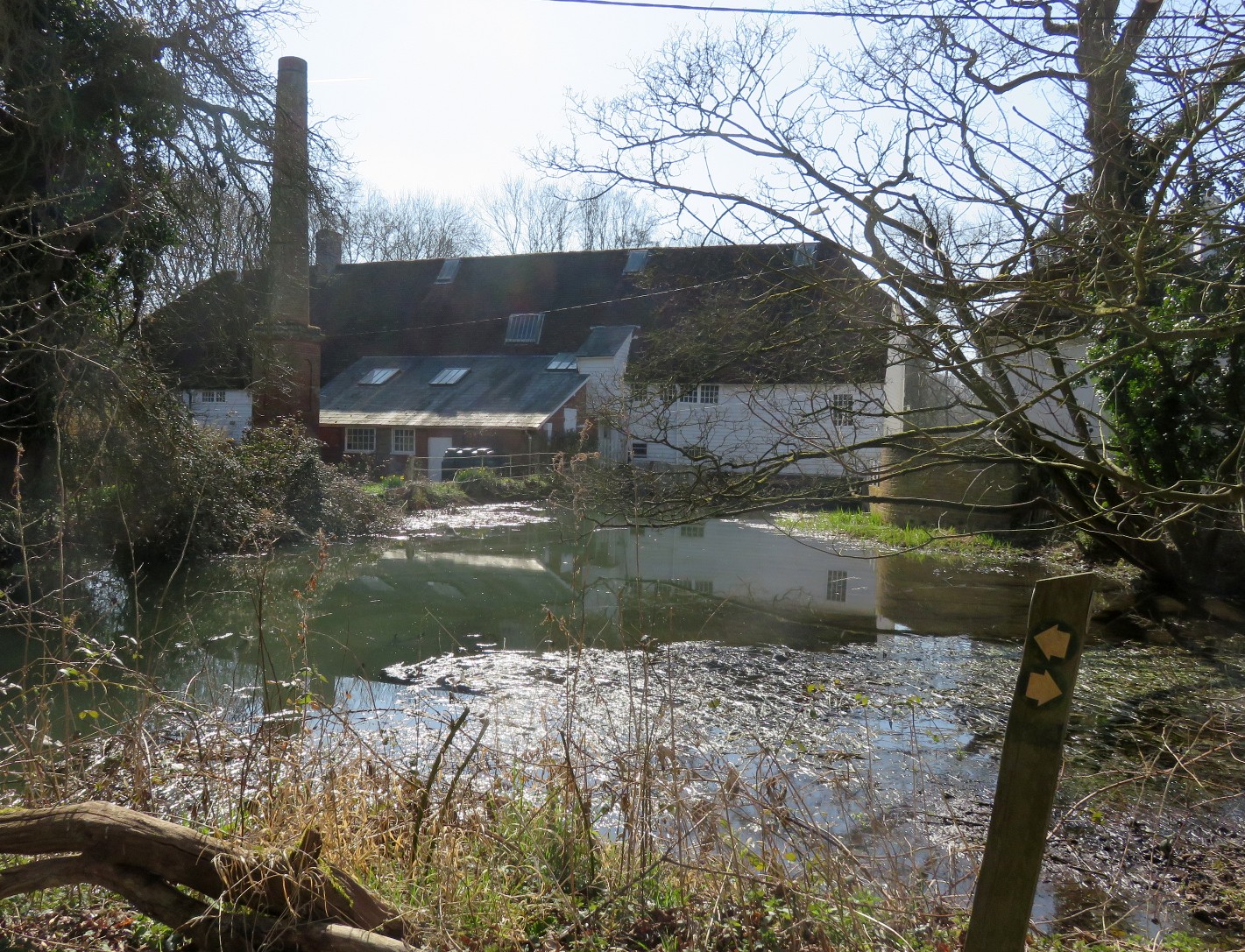 |
Coggeshall, Abbey Mill:
We were unable to access the front of this mill,
being put off by the forceful ‘PRIVATE’ signs. From
the rear we were able to see across the mill pond.
Built for the abbey which was founded in 1140, in
17th century it was a fulling mill; the present
mill was built in the mid-18th century as a weaving
mill, but became a silk throwing mill in 1820. In
1840 it was was converted to corn milling and later
adapted for steam power; the chimney and engine
house remain. It remains largely intact and is
sometimes open to the public.
|
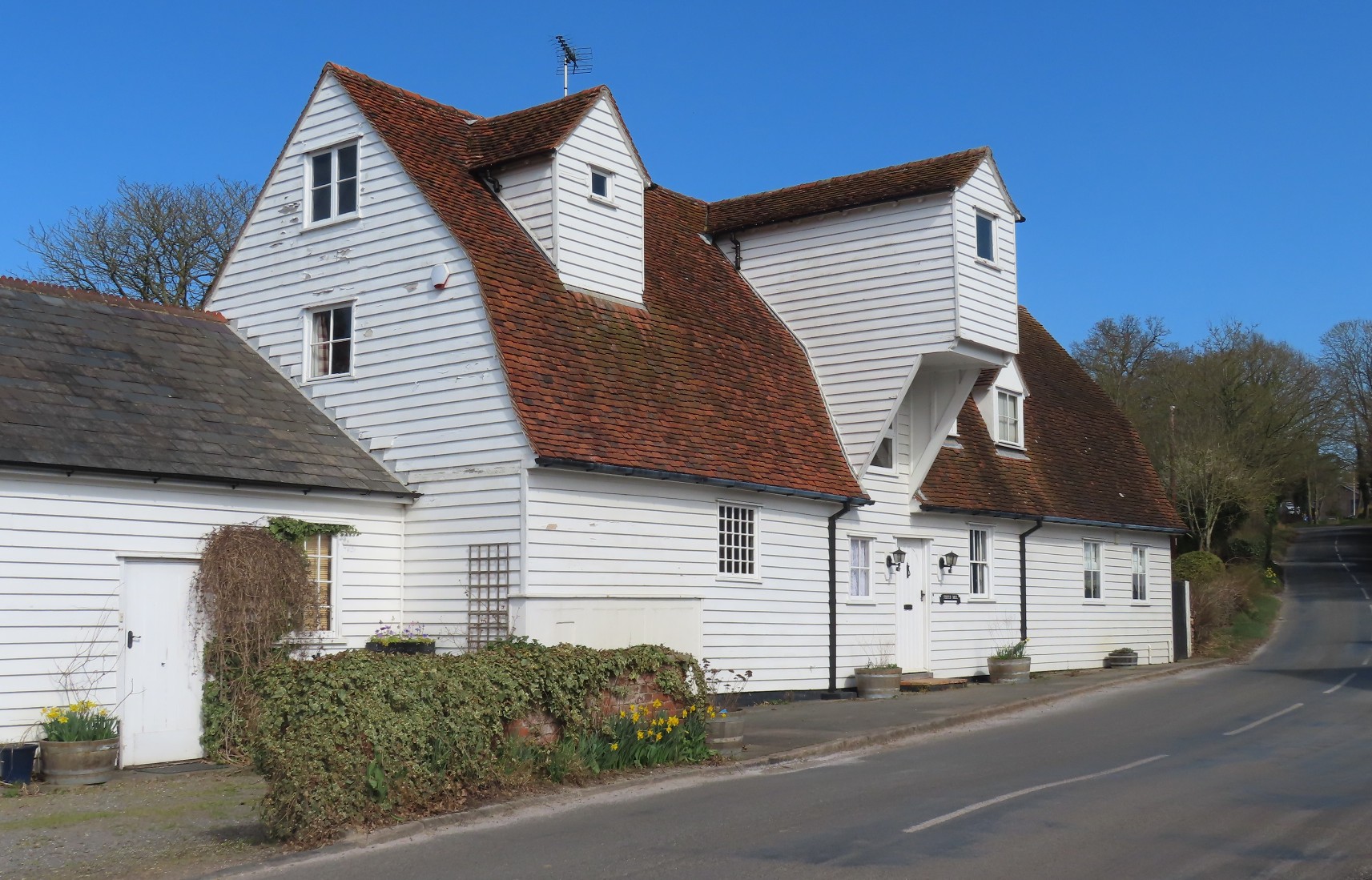 |
Stisted:
Built in the 18th century and extended in the 19th
century by a single story engine house, it
originally ran a pair of fulling stocks as well as
grinding corn. As the stones floor is lower than
the wheel pit, the stones are overdriven It used
steam when the waterwheel could not be used due to
flooding. It closed in 1960, but a lot of machinery
remains. |
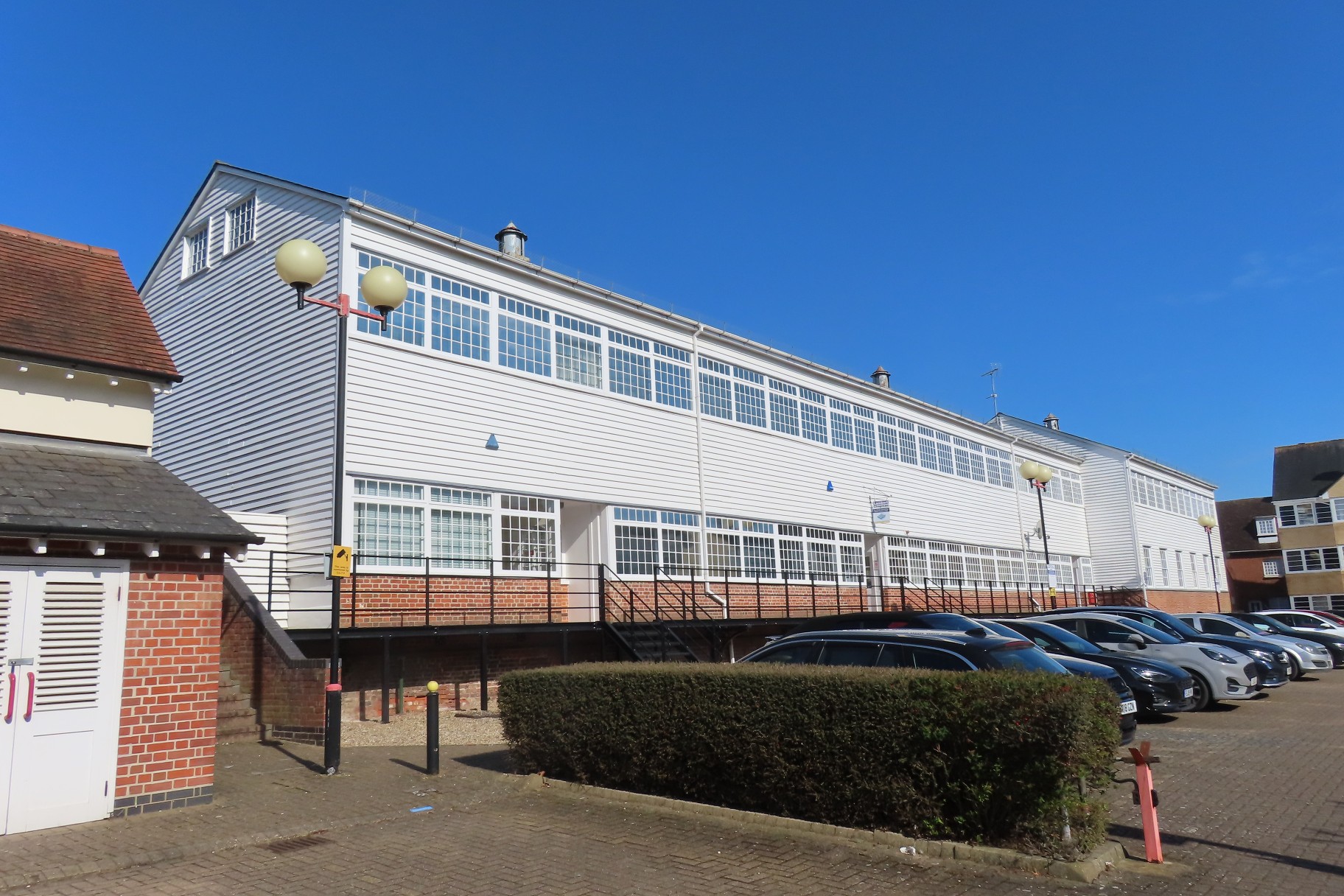 |
 |
|
Braintree:
This large complex of silk weaving mills was
developed in the late 1850s by Daniel Walters. In
1875 power looms were introduced, including some
Jacquard looms. The business was bought by Warner &
Sons in 1894, who reverted to hand loom weaving
until 1918 when steam power was re-introduced.
After various changes, the mill ceased operation in
1971. The two main buildings are now in commercial
use, and part houses the Warner Archive.
|
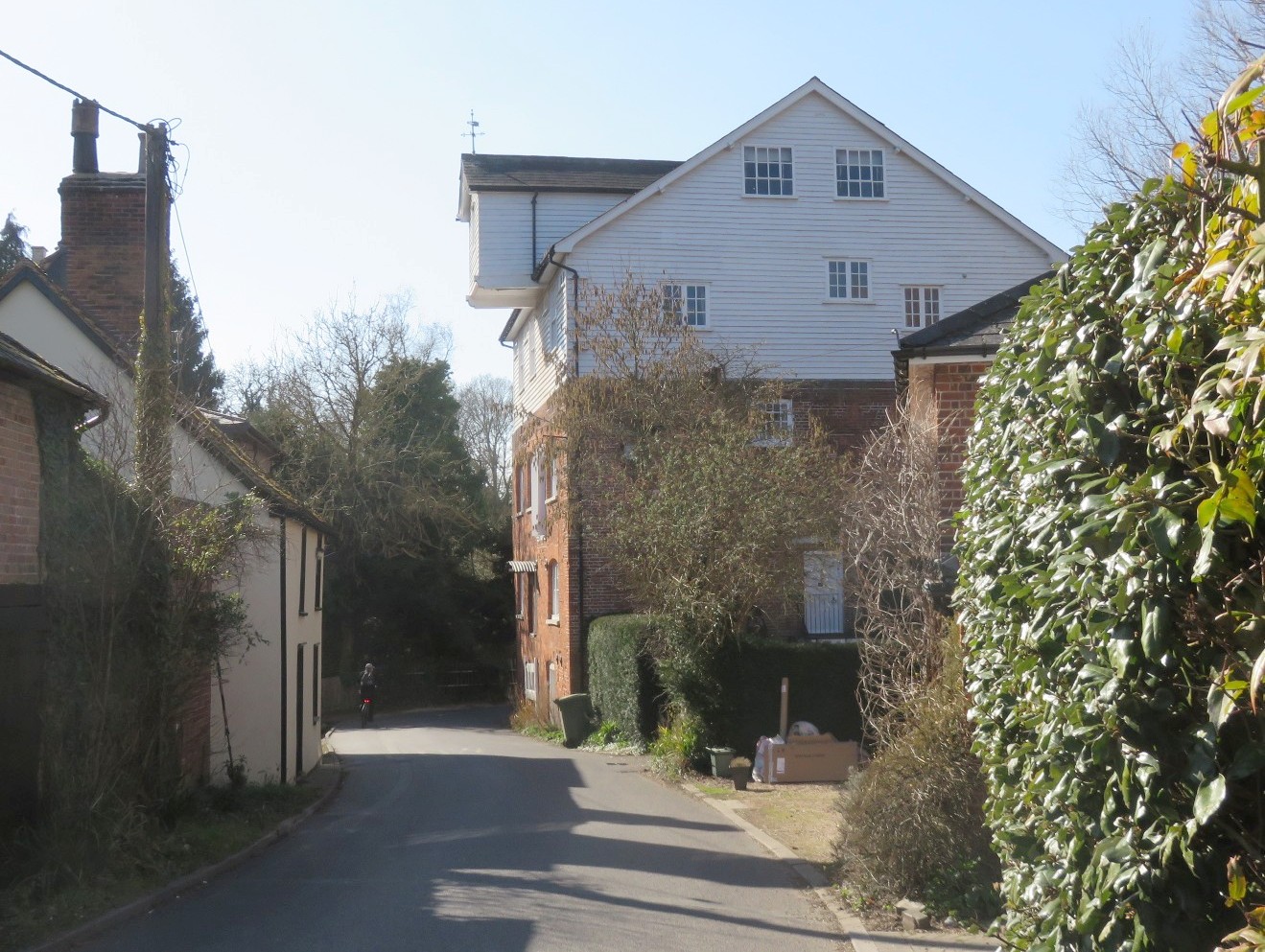 |
Cressing:
In 1804 Joseph Savill converted the existing fulling
mill to corn milling, but continued with fulling and
also spinning. A steam engine and house were added
in 1862. In 1892 additional roller mills were
installed and then a turbine replaced the 18ft
diameter overshot waterwheel. All milling ceased in
1992, but the turbine continued to generate
electricity. It is now residential. |
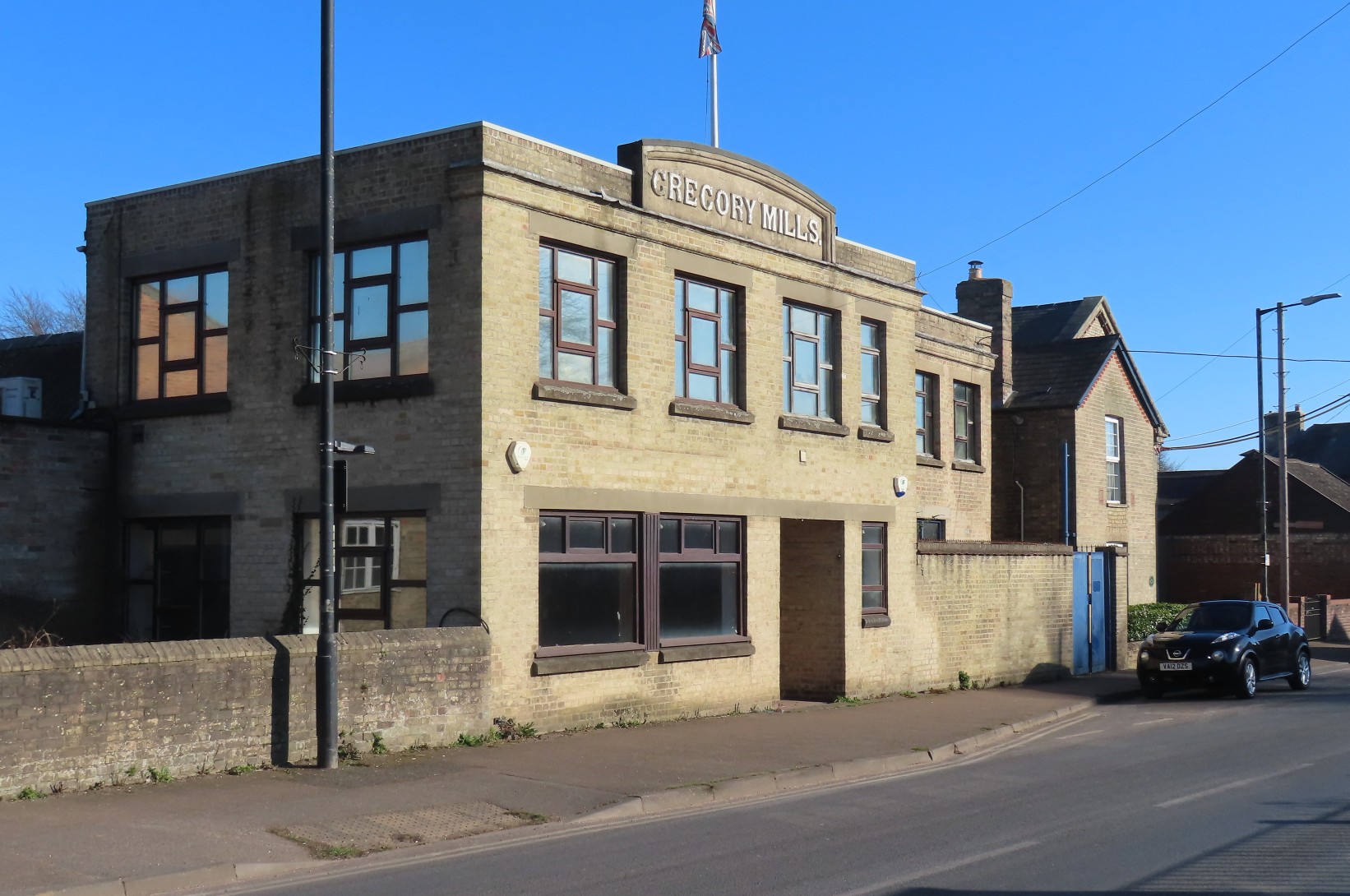 |
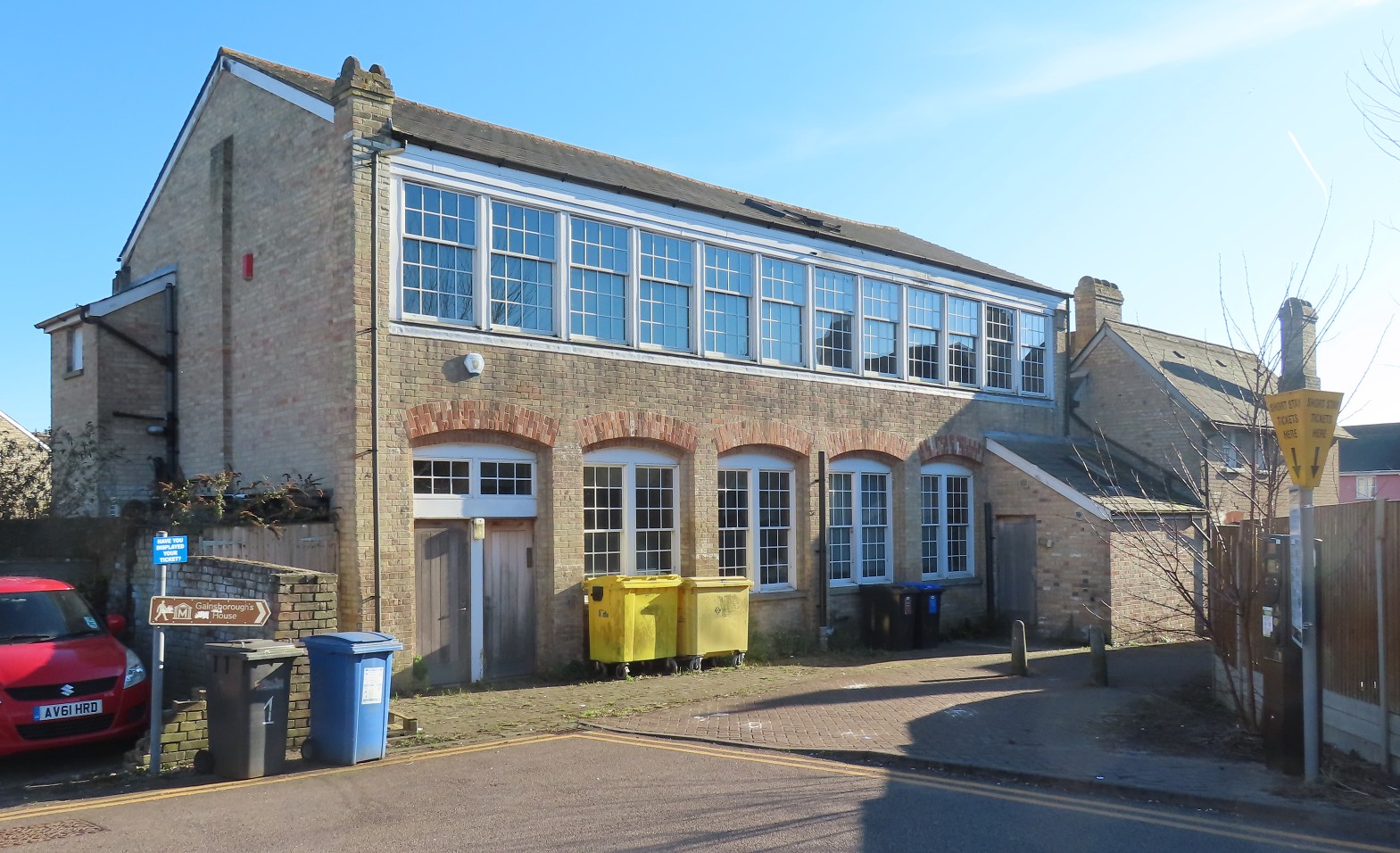 |
|
Sudbury:
Like Halstead and Braintree, Sudbury (in Suffolk) is
a silk town. In 1985 HIAS visited this working silk
mill, operated by Vanners, who trace their origins
back to the French Protestant weavers who settled in
London, later moving out to the Essex and Suffolk
borders. There are a variety of buildings dating
from the 1930s.
|
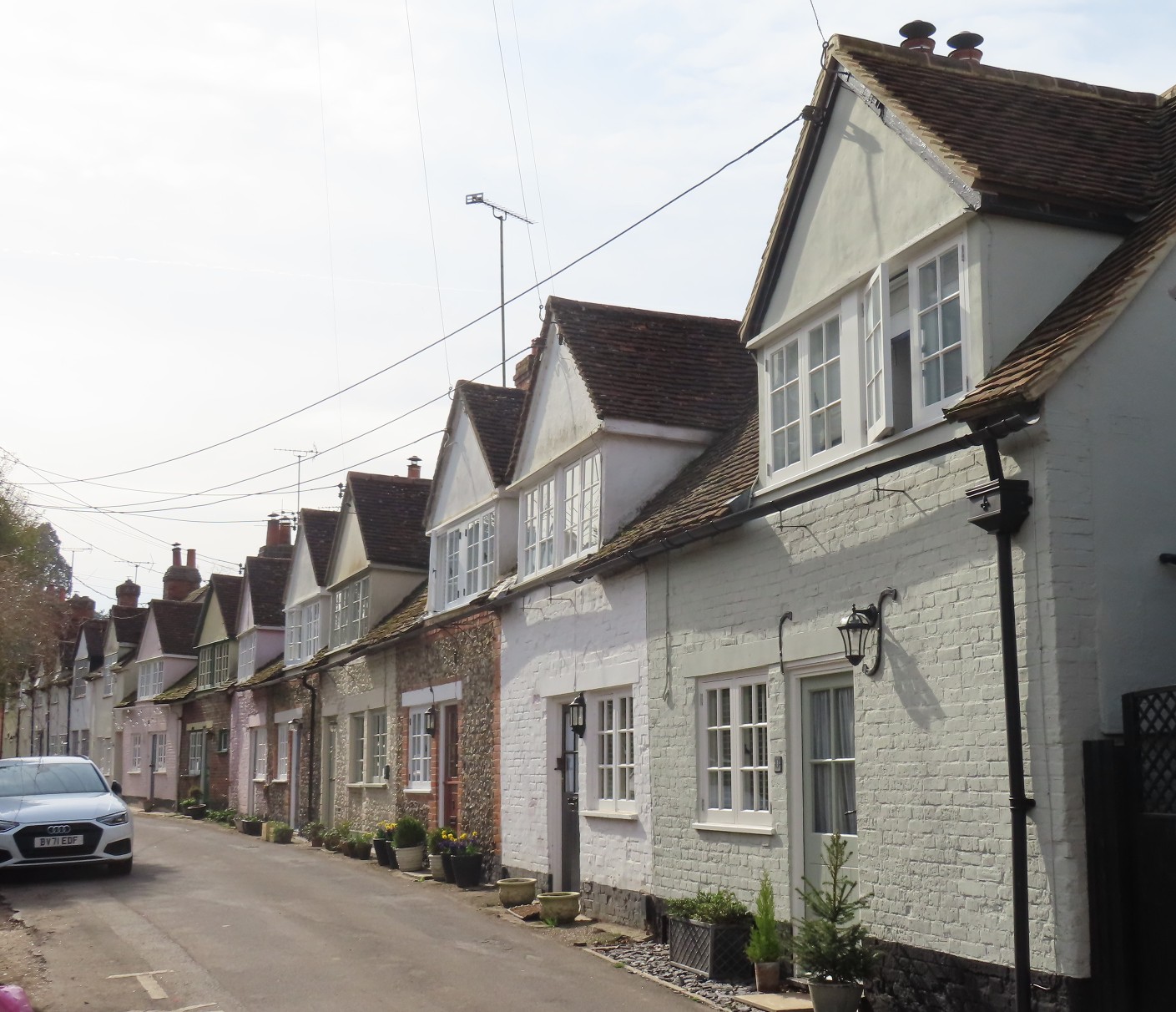 |
Castle Hedingham:
We make an exception here to our rule about pretty
villages. Our excuse is that these are weavers’
cottages, as evidenced by the large first floor
windows. Like everywhere else, the textile industry
began with weavers working at home.
|
|
Saffron Walden:
Myddleton Place was built as a combined shop, home,
and warehouse in the 1490s. The sack hoist was
added in the early 19th century when part of the
building was converted to a maltings. Saffron
Walden had a large brewery with the remains of some
6 surviving maltings scattered around the town.
Information from A Guide to the IA of Essex,
AIA 2012,
and Some Essex Watermills, Hervey Benham
1983.
|
 |
   |
|
|
